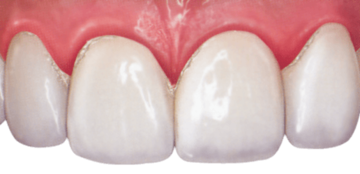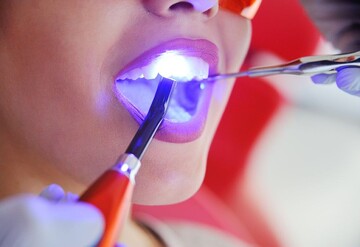Preventive
New patients receive a comprehensive examination which includes a screening for oral cancer, gum and bone disease, blood pressure, and systemic disorders. A routine oral exam is performed on established patients to determine any changes in dental and health status since the previous visit.
Your gum tissue is measured with a fine instrument ruler to calibrate in millimeters pocket depth between the tooth and the connective gum tissue around the tooth. Pocket depths more than 4 millimeters, could indicate disease and infection. The deeper the pocket, the greater the extent plaque bacteria collects and infection in gum disease develop.
X-rays are taken as needed.
Tooth scaling and root planing occur as needed.
Routine cleanings also include a professional polishing (Prophy) that removes only the soft sticky plaque that is above the gum line.
Proper brushing of teeth can be done in three steps:
1) Brush teeth gently using a circular motion along the outside and inside of the tooth surface while holding the brush at a 45 degree angle.
2) Make sure to brush each tooth individually and to use the front half of the brush in a circular motion vertically behind the front teeth.
3) Place the brush against the top of your teeth use a gentle back-and-forth motion to brush. After brushing all your teeth be sure to brush your tongue in order to remove odor-producing bacteria.
In order to floss properly, begin by taking approximately 18 inches of floss and winding one end a few times around your middle finger. Leave approximately 6 inches of floss between your hands and wrap the opposite end of the floss around your other middle finger once. Put the floss between your thumbs and index fingers and hold tightly.
As you insert the floss between your teeth using a gentle rubbing motion, curve the floss in the shape of a C once it reaches the gum line. Move the floss up and down against the side of the tooth in a gentle manner, making sure you work the floss into the adjacent tooth before moving onto the next space. Before you move onto the next space, wind a little floss around your middle finger in order to get a new section of floss to work into your gums.
Fluoride, a substance that's found naturally in water, plays an important role in healthy tooth development and cavity prevention.
Fluoride combats tooth decay in two ways:
1) It strengthens tooth enamel, a hard and shiny substance that protects the teeth, so that it can better resist the acid formed by plaque.
2) Fluoride allows teeth damaged by acid to repair, or re-mineralize, themselves.
Fluoride cannot repair cavities, but it can reverse low levels of tooth decay and thus prevent new cavities from forming.
The American Academy of Pediatrics recommends that these fluoride supplements be given daily to children between the ages of 6 months and 16 years. The dosage will change as your child grows. Only children living in non-fluoridated areas or children who drink only non-fluoridated bottled water should receive supplements.
Most children get the right amount of fluoride through a combination of fluoridated toothpaste and fluoridated water or supplements. Too much fluoride before 8 years of age can cause enamel fluorosis, a discoloration or mottling of the permanent teeth. This condition is unsightly but harmless and often can be treated with cosmetic procedures.
Plaque is essentially the start of gum disease problems. Plaque is a build-up of particles from the foods you eat every day. Once sugars are introduced to plaque, it turns into a tooth eating acid that sits just above the gum line. If regular oral care isn't standard, the acid will start eating at the teeth and gums. Plaque that is allowed to sit for a prolonged period of time can cause cavities, gingivitis and other problems in your mouth. If it's left longer than that, serious dental procedures may be required to restore your decaying smile.
In order to remove plaque, tartar and calculus deposits from your teeth, a tooth scaling must occur. In some cases plaque and tartar are present below the gum line and a sub-gingival tooth scaling must occur.
Sometimes after a tooth scaling, the roots of a tooth must be planed in order to create a smooth surface for the gum tissue to re-attach to. In addition to the planing, your dentist may also prescribe medication in order to control infection and pain.



